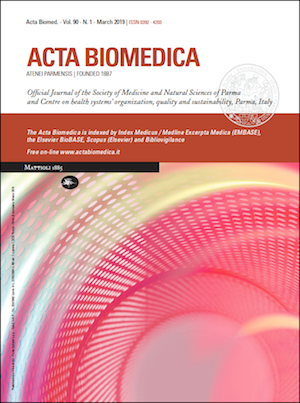The experience of a tertiary unit on the clinical phenotype and management of hypogonadism in female adolescents and young adults with transfusion dependent thalassemia
Keywords:
transfusion-dependent β-thalassemia, hypogonadism, primary and secondary amenorrhea, hormone replacement therapy, stroke, thin endometrium, adverse events, ICET-AAbstract
Background: Transfusion-dependent β-thalassemia (TDT) is associated with several complications necessitating a multidisciplinary approach for diagnosis, treatment and follow-up. Hypogonadism in female TDT patients is one of the most common endocrine complications, requiring hormone replacement therapy (HRT) throughout reproductive life. Little is known about the balance of benefits versus risks of treatment with sex steroids. Aim: The aim of this manuscript is to review the action and the associated adverse effects of HRT in hypogonadal TDT females. Design: Retrospective medical database records from a single centre, over a period of 38 years (January 1980 to June 2018), were reviewed. Study population: Forty-two cases of hypogonadism in TDT females followed in a pediatric and adolescent outpatient clinics, were in included in the study. Methods: Auxological, clinical, laboratory, hormonal and imaging investigations were reviewed, as well as all adverse events registered during HRT. Main results: In general, HRT was safe for most patients. There were few minor side effects and a couple of rare but serious adverse events. Conclusions: The study provides a representative clinical profile of long-term effects of HRT in hypogonadal adolescents and young adult TDT women. Our results highlight also the need for further research in other areas for which HRT may have a role. We hope this will contribute to a wider understanding, and potential improvement, of patient safety and quality of life.
Downloads
Published
Issue
Section
License
This is an Open Access article distributed under the terms of the Creative Commons Attribution License (https://creativecommons.org/licenses/by-nc/4.0) which permits unrestricted use, distribution, and reproduction in any medium, provided the original work is properly cited.
Transfer of Copyright and Permission to Reproduce Parts of Published Papers.
Authors retain the copyright for their published work. No formal permission will be required to reproduce parts (tables or illustrations) of published papers, provided the source is quoted appropriately and reproduction has no commercial intent. Reproductions with commercial intent will require written permission and payment of royalties.







